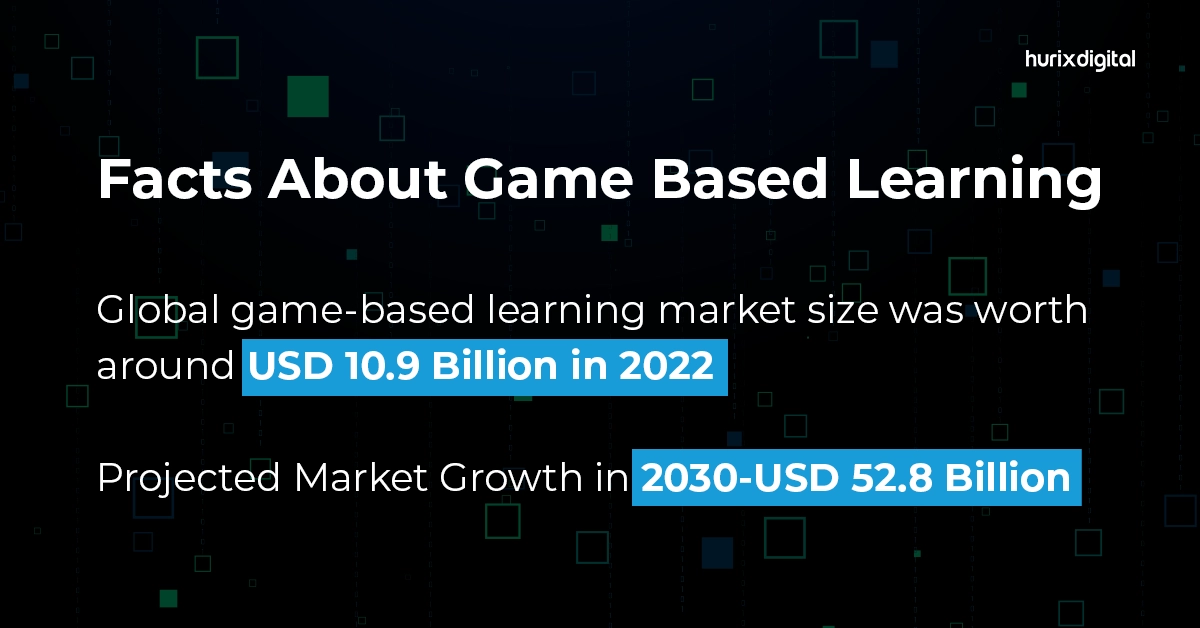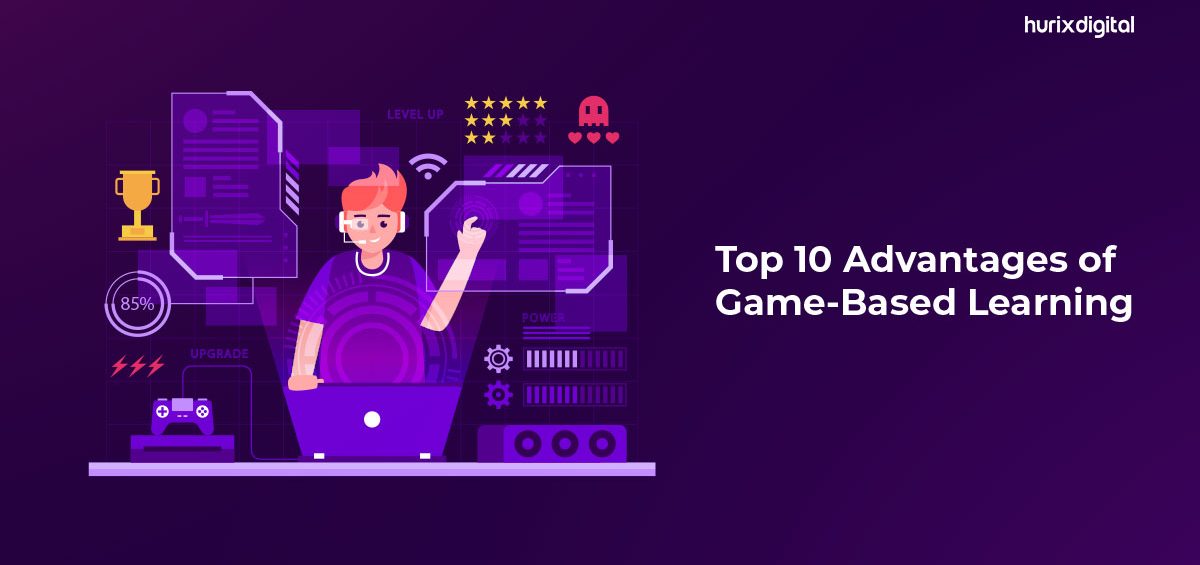Summary
Unlock the power of game-based learning with our exploration of its top 10 advantages. From fostering engagement and retention to promoting critical thinking and collaboration, discover how gamification revolutionizes education. Experience immersive learning environments that motivate and empower learners, making education enjoyable and effective like never before.
Table of Contents:
- Introduction
- Top 10 Advantages of Game-Based Learning
1. Game-Based Learning helps in Retaining Learning Insights
2. Learning through Familiar Devices
3. Stimulates the Imagination
4. Learning to Last a Lifetime
5. Helps in Simplifying difficult concepts
6. Learning by Doing
7. Improving Sales
8. Collaborate with the Team
9. Reduce Chances of Failure in the Real World
10. Higher Receptivity to Learning - Conclusion
- Frequently Asked Questions (FAQs)
To understand the benefits of game-based learning for education and training, it is first important to understand what game-based learning is. Game-based learning, as the name suggests, is gameplay with defined learning goals, and designed to present subject matter in the form of a game to help learners understand the concepts. Often in a simulated environment and gain experience of their applications in a virtual environment before using them in the real world.
Online Game-based learning can take place in a virtual environment or a simulated environment created by augmented reality. Virtual environments resemble real-life settings while augmented reality goes one step further by presenting an enhanced version of reality. Unlike virtual reality, AR does not create a virtual environment, rather it imposes a 3-D dimension or 360-degree view to the environment using computer-generated information to create an enhanced version of the existing reality.
Introduction
Online Game-based learning is basically a computerized imitation of a real-world system or process. In the context of business, these games imitate real-world processes in various fields such as sales, training, and development, and allow employees to hone their skills in decision making, strategic thinking, problem-solving, market analysis, teamwork and leadership, operations, and financial analysis.
Game-based learning involves animated programs that have ‘humans’ and ‘opponents’ whose interactions have an effect upon each other and on the environment. These games allow employees to control the movements and actions of the animated characters, with the aim to develop some competitive skills. For example, in the case of game-based training for sales, employees receive an imaginary business situation to make decisions, which can include making decisions on advertising, price, sales tips, meeting targets, etc. These games mirror real business challenges, have an element of competitive challenge, use images and data to enhance the learner experience, and incorporate data and reporting for feedback.
Also Read – What’s the Difference Between Game-based Learning and Gamification

Top 10 Advantages of Game-Based Learning
1. Game-Based Learning helps in Retaining Learning Insights:
Enterprises invest heavily in training employees and then struggle to retain the learnings once they retire or leave. Game-based training usually has machine learning built into the systems which allow all colleagues, past and present to benefit from the combined knowledge pool. Besides, game-based learning allows learners to progress at their own pace, thus, making learning a more personalized experience.
2. Learning through Familiar Devices:
Online Game-based learning can be possible through devices which employees are already familiar with, for example, the smartphone. The familiarity with these devices simplifies learning. With apps installed in their phones, employees can use today’s digital and machine tools to improve their productivity and enhance their skills to further improve their careers.
3. Game-Based Learning Stimulates the Imagination:

Game-based learning allows learners and instructors to visualize 3D models in real-time and at scale. This helps to make learning more contextual, more real and therefore more enjoyable and relevant to the learners. A virtually enhanced world encourages the learners to use their imagination and discover new possibilities in a fun and interactive way. Interactive learning facilitates deep learning, increasing the possibility of retaining information for a longer time.
4. Learning to Last a Lifetime:
If successfully used, game-based learning can provide a learning experience that can last a lifetime. Let us take the case of an instructor who has to teach the employees about real problems faced every day at the workplace. In a traditional setting, the employees would be presented with a case study to read and understand the difficulties faced on the job and the solutions applied to mitigate the problems. However, using game-based learning, the instructor can actually make the learners experience the situation. Simulation games places participants in realistic, problem-based scenarios, where they have to apply their problem-solving skills to resolve the issues. Simulation is already used in many fields of work, for example, healthcare simulation involves replicating real-life medical scenarios, where learners have to perform a virtual dissection or prescribe appropriate medications. There are flight simulations to train pilot trainees, that are complete with different weather conditions, mid-air scenes and runway take offs.
Games thus help to create realistic situations through simulations and situational role plays to enable employees gain practical knowledge that they are unlikely to forget.
5. Game-Based Learning helps in Simplifying difficult concepts:
6. Learning by Doing:
Hurix Mini-Book:
Immersive Learning for the WIN in Education!
As digital technology grows, it becomes more and more difficult to keep the employees engaged. Game-based learning helps to bridge this gap and bring them closer to reality. It makes learning multisensory and more alive. The more the learners do, the more they learn, the more they assimilate and the more they retain.
7. Improving Sales:
Sales simulations are unique in the sense that they involve a higher level of customization, and participants can learn at their own pace, with ample time for practice and feedback. Learning involves both individual learning and team learning, and an instructor is also present to solve problems which learners don’t comprehend.
8. Collaborate with the Team:
Since game-based learning involves a real-world situation, the entire team can collaborate in the learning environment, brainstorm on the possible outcomes and share their ideas to overcome problems.
9. Reduce Chances of Failure in the Real World
As mentioned, games resemble the real world, which means that the company benefits by allowing its employees make and learn from their mistakes in the virtual world, rather than making mistakes in actual situations. This in turn helps the company to save both money and reputation. Employees trained extensively in the virtual world are less likely to fail in the real world.
10. Higher Receptivity to Learning:
Game-based learning is multi-sensory learning which greatly enhances a learner’s ability to grasp and retain concepts. Sales personnel can learn new sales tips faster, retain them in their memories and remember to use them effectively to close a sale in real-time.
Keen on leveraging the benefits of game-based learning? HurixDigital’s game-based learning solutions may just be the answer to your company’s training needs. Our solutions can be customized to your unique requirements to address strategic challenges and enable learners to tackle them in a professional and experienced manner.
Conclusion
Related Read:
- Gamification – The Secret Sauce for Employee Engagement?
- 12 Ways to Enhance Employee Engagement with Gamification
- Gamification in Learning: 7 Powerful Strategies to Implement
- Gamification: 5 Effective Ways to Gamify Learning in Higher Education
- The Benefits of Gamification In Business
- 5 Effective Gamification Strategies at Work for Enthralling Engagement
Frequently Asked Questions (FAQs)
1. How does game-based learning benefit businesses?
A. Game-based learning in business simulates real-world processes, enhancing skills in decision-making, strategic thinking, problem-solving, teamwork, leadership, and more.
2. How does game-based learning make learning more effective?
A. Game-based learning involves interactive elements that engage learners’ imagination, encourage deep learning, and help retain information for a longer time.
3. Can game-based learning simplify complex concepts?
A. Yes, games can provide tangible representations of abstract concepts, allowing employees to grasp difficult ideas from different perspectives.
4. Can game-based learning be done on familiar devices?
A. Yes, game-based learning can be conducted on devices like smartphones, utilizing tools that employees are already familiar with.
5. How does game-based learning stimulate imagination?
A. Game-based learning allows for visualization of 3D models in real-time, encouraging learners to use their imagination and discover new possibilities in a fun and interactive way.











